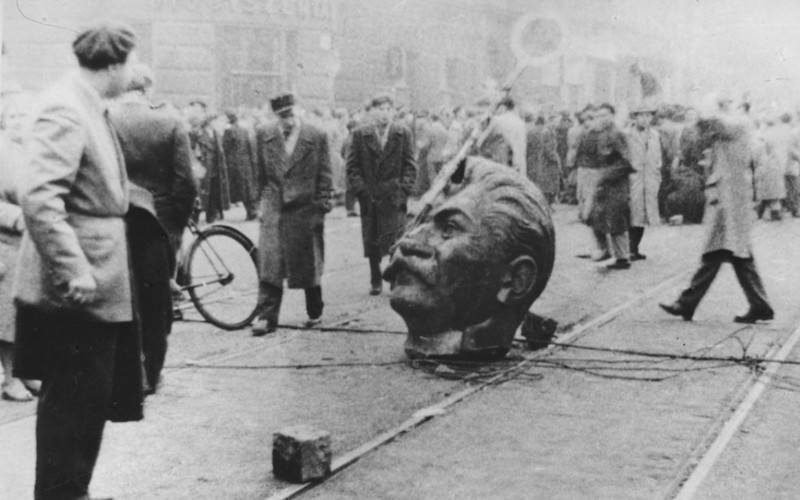Hungarian Revolution
Episode #7 of the course Revolutions that changed the world by James Wareing
Today, we shall learn about the Hungarian Revolution and how it can be seen as a metaphor for the wider global conflict that was splitting the world at the time.
What Caused the Revolution?
In June 1956, protests arose against the leader of the Communist Party in Hungary, Rákosi. Hungarians were angry about the lack of liberty and democracy in their country. They had no doubt been spurred on by similar revolts in Warsaw, which had led to concessions from the Soviets. Earlier that year in February was the denunciation of Stalinism and the horrors and oppression that his regime had wrought. Stalin’s control over Hungary had led to extreme hardship. Around 4% of the country had been found guilty of anti-Communist activities, with many being sentenced to death.
Main Events
Hungary was part of the Warsaw Pact, effectively leaving it under the control of the Soviet Union. With an increasing perception of liberty and freedom of expression, Hungarians thought that this was their opportunity to rid themselves of Soviet control. When the successor to Rákosi proved to be no more popular, protests started again, riling against Soviet oppression.
The Communists’ response to this was to appoint Imre Nagy as the leader of Hungary. Nagy was an anti-Stalinist and tried to restore peace with the Soviets. The Soviet soldiers left Hungary after talks with Nagy, and the Hungarians were confident of liberal reforms, such as free elections and support from the West. However, the US and other Western liberal governments did not really do much to aid the revolt. In the public discourse of the following decades, the Hungarians felt that they were let down by the rest of the world and that more could and should have been done to aid their quest for liberty from Soviet control.
Hungary had little strategic significance to the Soviets, and if their demands had been less radical, there may have been a positive outcome. However, Nagy wanted Hungary to leave the Warsaw Pact, and this was something that the Soviets could not accept. Hungary acted as a buffer zone between the USSR and the rest of Europe and more importantly, United States troops. If Hungary had successfully left the Warsaw Pact, that could also have led to other quests for independence that would challenge the USSR’s supremacy.
Nagy was too passive and would easily yield to the demands of others. He failed to identify with Hungarian revolutionaries and in their view, was still part of the regime they so strongly opposed. He was a particularly poor public speaker, a significant flaw for a man leading a revolution, and his addressing of his people as ‘comrades’ did nothing to dispel the sentiment that he was too aligned with the Soviet Communist regime.
When Soviet tanks and soldiers took to the streets of Budapest to crush the revolution, the Hungarians stood no chance. There was no backing from the US, and the immense strength of the Soviets quickly quelled any revolutionary spirit. Nagy was arrested and later executed, while János Kádár, selected by the Soviets, took power of Hungary.
What Happened Next?
Kádár would rule Hungary until 1988, under strict Communist rule dictated by the USSR. The brutal response of the USSR toward the Revolution made it clear that dissent was not going to be tolerated, and demonstrated the lack of support the West could offer for any quests for independence.
How Is It Viewed Today?
October 23, the day of the protests that led to Imre Nagy coming to power, is now a national holiday in Hungary. However, while the date is remembered fondly by Hungarians as an example of their willingness to stand up to oppression, that sentiment is not entirely shared by the current Prime Minister, Viktor Orban. Orban, an increasingly authoritarian ruler, has recently been developing closer ties with Russia and is an increasingly influential voice of dissent against the European Union. In December 2018, an iconic statue of Nagy that looked toward the parliament buildings was moved to a less prominent position. Protests have recently been rising against Orban’s rule, and his decision to remove the statue of Nagy, who represents Hungarians’ desire for liberty and defiance against oppression, can be seen as a quest to limit any reminders of revolutionary power and ideals.
Tomorrow’s lesson will see us move to Asia with the Iranian Revolution, the first of our revolutions to be driven by religion.
Recommended book
Sapiens: A Brief History of Humankind by Yuval Noah Harari
Share with friends

